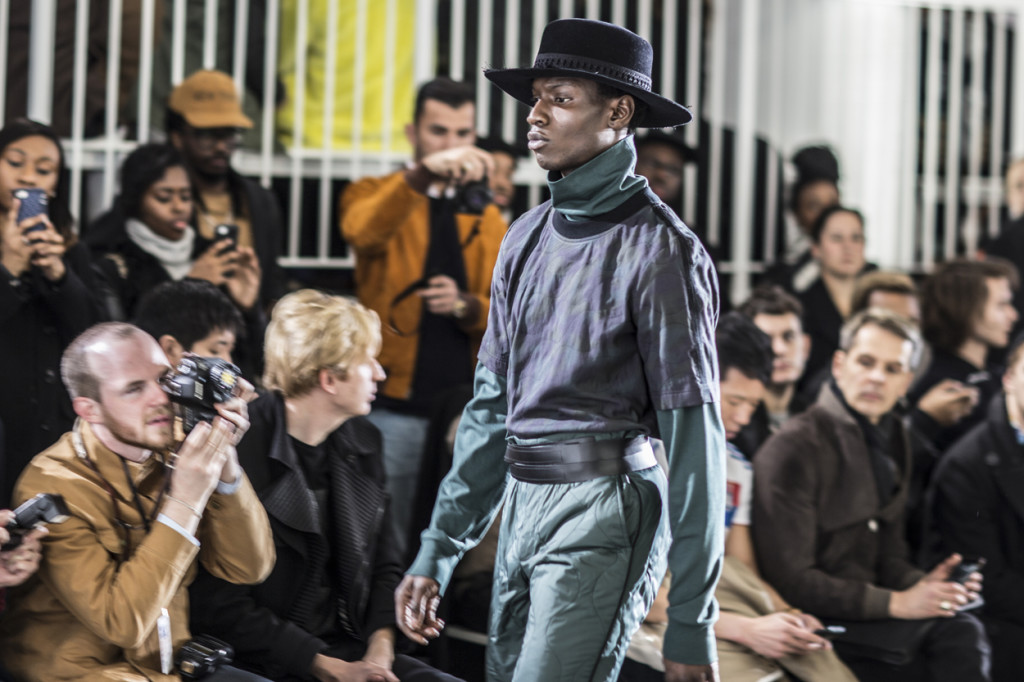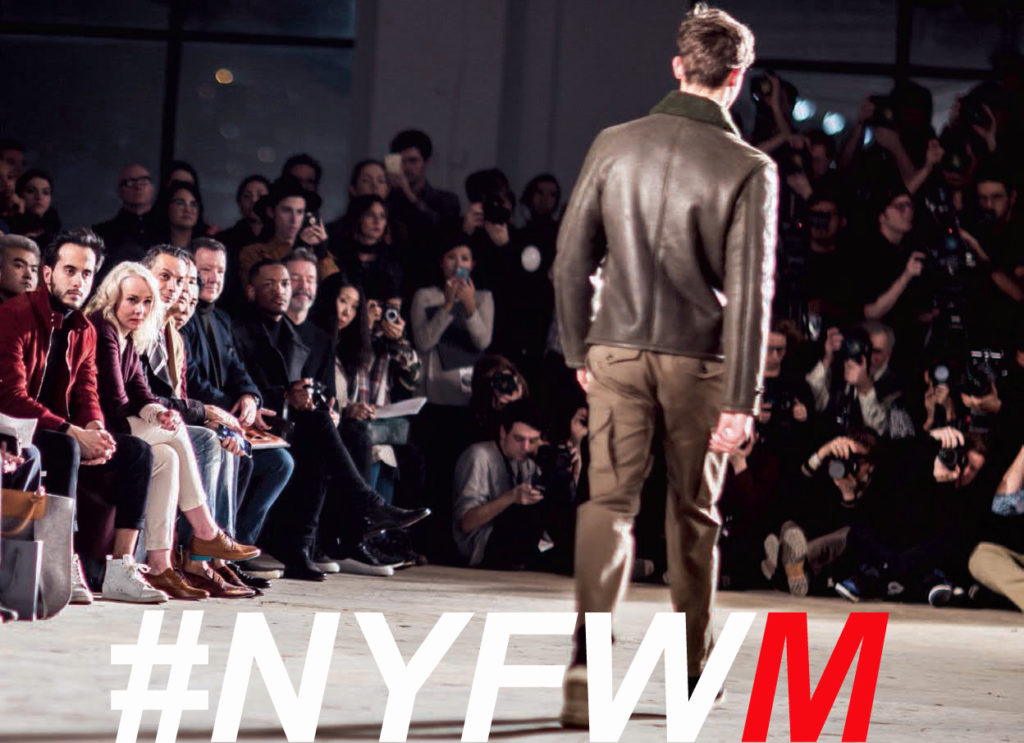NYFWM – WHAT’S NEXT?

We can cast around blame for this frenzy like bottles by British soccer hooligans, but Burberry, who was among the first to pull out of the recently revived dedicated men’s weeks, does have a point. Folk who like fashion are seeing the collections presented at the seasonal shows in real time, through Snap Chat and Instagram, and as pieces like say, Bobby Abley’s SS15 Ursula sweatshirt (reimagined as Aladdin’s Abu and Genie for SS17) build some serious ‘social’ buzz, by the time the piece is available to buy, the customer’s already over it. So Burberry’s ‘changed the game’, and some others followed suit. They’ll present collections that will be essentially seasonless, and available to buy immediately after the show. Now, pulling out of London Collections: Men and rolling both women’s and men’s into a single show has much less to do with aligning the runway and retail calendars, and probably more to do with budgets. Times are hard for some and if you have both men’s and women’s collections, showing two separate shows takes resources, namely that most loathed of all words, ‘budget’.
So we call the model ‘broken’ or other similar slurs, and wide-eyed wannabe soothsayers invoke every garbled, ill-informed tidbit they’ve heard, and harbingers of bad news hang out at every industry event, spreading their gospel and perhaps inadvertently hurting the industry. But as the CFDA’s CEO Steven Kolb explains, it really just isn’t so serious. “It’s actually very simple; the way it works is as follows: in July the industry will be showing spring, but the retail season is moving into fall, so, two things have to happen at the same time,” he explains. “The designers still have to show spring to the trade, to the buyers and to the long lead press, but this can be in a scaled back, intimate setting, where those images that come out of that presentation are perhaps embargoed and aren’t shown to the public. That’s something that the editors and buyers we’ve talked to are very comfortable with. The designer might agree that five looks from that collection can be released as a teaser or a way to kind of create some preview or excitement. Also at the same time, marketing money from the big show or activation that has been traditionally done only for trade, will be used to create a more consumer/marketing driven opportunity, showing clothes that are close to in-store or in-store at that time. I think some people get confused and think that this incredible opportunity to gather menswear designers in one place for presentations and runway shows will go away, but it is simple a refocus on the way brands are talking to their customers and the industry.”
Adds Bruce Pask, men’s fashion director at Bergdorf Goodman: “I certainly think we are in a time of flux, where designers are closely analyzing the great investments that, both monetary and creatively, they put into showing their lines seasonally. I think each house is looking to optimize its return, to find the best, most effective way to get their seasonal message out there, for the industry and for consumers, and the solutions will vary distinctively from brand to brand.”

“There’s definitely a shift happening, but of course, we’re continuing on with New York Fashion Week: Men’s, because it’s such a beneficial initiative for everyone involved,” says Snyder. “First of all, it took forever to get this dedicated men’s week up and running. It was a huge undertaking involving Steven Kolb, Jim Moore, Tommy Fazio and all the designers. Every season has been incredible for us, so for us to walk away makes no sense. We get so many impressions from that single event, but we will move to make it more inclusive, so this season we’re adding a shop-now capsule.”
Still, Snyder readily admits that the economics of participating in Fashion Week can be prohibitive for some smaller brands. “The fact is, doing these shows on your own is prohibitively expensive,” he says. “Just the lights alone for a show cost tens of thousands of dollars. When we all come together we can share those costs so more people can take advantage of that, and everyone benefits.”
Reece Crisp, menswear buying manager at Farfetch, also sees a bright future ahead. “Yes, fashion weeks will develop, and new ways of showcasing collections will emerge. Brands that do this first and in the most innovative ways will be the ones that succeed. The industry itself is about change, so it’s important that brands think about this holistically when it comes to showcasing their collections.
“Theory and practicality in fashion are two very contrasting forces,” adds Crisp. “This is where innovation and new ways of thinking come in to play. The cycle in general is not as easy to change as some people seem to think, but being agile and not restricting yourself to one single strategy means brands will be able to continue to drive demand and create excitement.”



